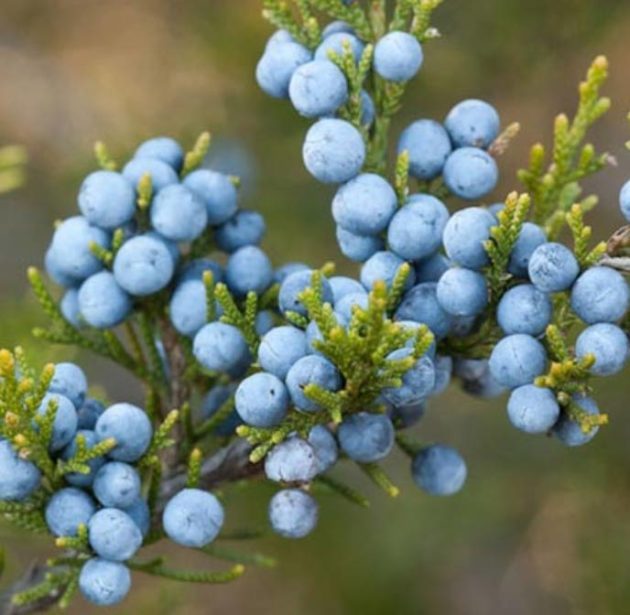From their behavior it’s quite clear that birds love the berries on the plants on this list. So if you enjoy watching birds then you should grow a few of these plants in your garden. Apart from anything else the berries are attractive in their own right and provide a splash of color to the fall scene. The ten berry plants are described in an article by Deb Wiley which I found on the Birds and Blooms website.
Berries are an irresistible sweet treat for birds, particularly in winter when food is scarce. The fruits produced by these trees and shrubs provide calories and crucial nutrients that your favorite songbirds need, especially during the cold months when other natural food sources are nonexistent or buried in the snow.
Juniperus virginiana,?Zones 2 to 9
Size: 40 to 50 feet tall, 8 to 20 feet wide
Eastern redcedar and cedar waxwings form a marriage made in bird heaven. Several species adore the blue-gray fruits that resemble berries but are actually cones made of fused scales.
It may be tempting to grow several trees in a large group, but keep eastern redcedar away from apple and crabapple trees. A fungus known as cedar apple rust thrives when both apples and redcedars are present.
Why we love it: The pyramid shape provides dense nesting and roosting cover for many birds, including sparrows, robins, mockingbirds, juncos and warblers. Birds use the bark for nest material.
2. Firethorn
Pyracantha coccinea, Zones 5 to 8
Size: 6 to 18 feet tall and wide
Woody plant expert Michael Dirr says it best: ?For fruit display in the winter garden, few plants rival pyracanthas.? Birds flock to the clusters of orange to red fruits (technically called pomes, not berries) and may appear intoxicated when fruits are overripe.
Why we love it: Firethorns adapt to most conditions. Choose one that is resistant to fire blight.
3. Winterberry
Ilex verticillata, Zones 3 to 9
Size: 6 to 15 feet tall and wide, but varies by species
Songbirds, waterfowl and game birds love the fruits of this common holly, especially in late winter when food is scarce. Winterberry grows best in full sun and tolerates wet soil in spring and drought in summer.
Why we love it: Crimson berries add color to the winter landscape. Plant in groups for major impact.
See more at Birds and Blooms
Feature photo: Richard Day/Daybreak Imagery








Beautiful bird!